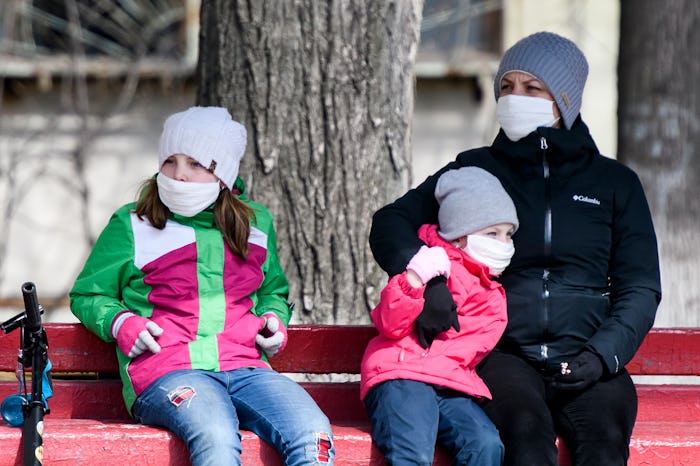Life

Does Coronavirus Get Worse In Cold Weather? A New Study Explains
As temperatures began to rise in late spring, there was a collective holding of breath to see if the warmer weather would usher in a decline in COVID-19 cases. The summer heat has come and gone (and coronavirus still remains), but the impact of weather on COVID-19 spread continues to be a focal point for researchers as winter approaches.
A new study from the University of Texas at Austin, published on Oct. 26 in the International Journal of Environmental Research and Public Health, revealed that neither temperature or humidity play a significant role in the spread of the novel coronavirus. Led by researcher Dev Niyogi, a professor at UT Austin's Jackson School of Geosciences and Cockrell School of Engineering, and co-authored by Purdue University research assistant Sajad Jamshidi and Ohio State University doctoral candidate Maryam Baniasad, the paper details how it is not weather, but human behavior, that is responsible for the spread of COVID-19.
Although initial lab research estimated that coronavirus spread would be affected by the rise and fall of temperature, the outcome of this particular study determined that weather (as defined by "equivalent air temperature," which combines humidity and temperature into one number) does not have a direct impact on viral spread.
Infectious disease specialist Dr. Ceppie Merry, although not involved in the study, spoke with Romper via email about the importance of this paper's revelations. "This is such an interesting paper to discuss," Merry says. "It very much emphasizes the fact that we need to take responsibility for our role in reducing spread of this virus, rather than deflecting attribution to external factors such as the weather."
The paper did not directly study the impact of weather on human behavior and how the actions people take during each season could play a role in the spread of COVID-19. However, the data did show that the top two contributing factors to coronavirus spread are taking trips and spending time outside of the home. These two activities are more prevalent during summertime travel, as well as the winter season as people gather for the holidays.
"Humans are the host for the virus, and human behavior plays a much bigger role in the spread of infection than the weather does. Though the weather does affect human behavior," Dr. Leann Poston, a physician and medical writer with Invigor Medical, tells Romper. "Mixing social groups together, especially ones not normally in contact and in large gatherings, is very influential as far as the spread of the virus."
Experts agree that this new research on weather and coronavirus is helpful in determining how to approach additional studies moving forward to help evaluate viral spread in a more effective manner while working to mitigate risks. "It shows us the dangers of isolating out a confounding factor from a system and then making erroneous conclusions," Merry tells Romper. "This is a particular risk during a pandemic as we rush to find answers."
As the pandemic continues, further research will help doctors, government officials, and the general public understand how the novel coronavirus is spread. At this time, following clear, sound science and guidance is the best hope we have for reducing viral transmission. "Unfortunately, there is no easy solution to decreasing the spread of COVID," Poston tells Romper. "Wearing masks and social distancing is all we have to keep one human's secretions from landing on another."
Experts:
Dr. Ceppie Merry, infectious disease specialist, FRCPI, PhD
Dr. Leann Poston, medical writer, M.D., M.B.A., M.Ed.
Studies Referenced:
Jamshidi, S., Baniasad, M., & Niyogi, D. (2020). Global to USA County Scale Analysis of Weather, Urban Density, Mobility, Homestay, and Mask Use on COVID-19. International Journal of Environmental Research and Public Health, https://www.mdpi.com/1660-4601/17/21/7847
This article was originally published on